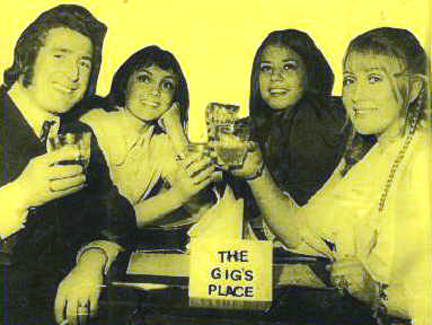Sometimes we are lucky on CHTM! to get mails from people who share the same love we do for history. So after posting about the Mayfair Café shop frontage on Richmond Street South the other day, to get this mail in our inbox this morning was an absolute pleasure. I was going to edit it, but its worth posting in full; a huge thanks to Graham Stone for getting in touch, the words below are his!
Can’t help out a lot with Molly Tansey (the electoral register for 1962-63 lists her as Mary and I have spoken to one old-timer – grocery wholesaler George Cooke, born in 1924 down the road at No 46 and died a year or so back, his father ran The Delta Café at No 40 South Richmond Street 1939-44 – who claimed to recall the Mayfair as “proper sort of place, neat and clean and well-turned out, like eating at home, good plain food and no pretensions”) but as for the location …

Before Portobello House opened in 1807 as the Portobello Hotel there were no buildings on the west side of Richmond Street, the land north of Portobello House used for storage by the Grand Canal Company. In 1840 (by which time there were three buildings at what today would be Nos. 38, 42b & 44), the stretch of land between the rear of Portobello House and Lennox Street was leased to builder James Henderson who used some to store his own building materials and sub-let portions to other merchants. Around 1850 this area is described as “Portobello Market” which suggests itinerant trading.

After Henderson (who continued to reduce his own holding bit by bit until, in 1869, he disposed of the last piece of land, at the corner of Lennox Street, today home to the Aprile Café and the Bretzel bakery), members of the Sweny family – furniture dealers, hauliers, undertakers and fuel merchants, see attachments 1 and 2 from the Irish Times – occupied the site until at least 1880 after which the building housed a plumber, a greengrocer/fruiterer, a grocer, a hairdresser and a wholesaler before Mary Tansey set up her Mayfair Café in 1956.

In 1970, musician Brian Carr (guitarist with the Royal Blues Show Band) saw an opening for a late-night dive where musicians could convivially gather after gigs and turned the Mayfair into one of Dublin’s earliest celebrity hotspots which he called The Gig’s Place. It attracted the likes of Sonny Knowles, chanteuses Maxi, Dick and Twink and bad boy of pop Dickie “Spit on Me” Rock, and later Bono, Vinnie Jones and Ken Doherty. Over the next four decades, as late-night bars and eateries proliferated, business gradually declined (it had become the haunt of sleepless taxi drivers rather than the rendezvous of glamorous celebrities) and Carr sold up in 2005. It struggled on under new ownership for a further seven years before closing.

Number 43:
1840-49 – an undeveloped site, part of James Henderson’s builders’ yard
1850s – first building on site, date uncertain
1858-1860 – William S Sweny, “job carriage, furniture van, coal factor and funeral establishment”
1860-1880 – John P Sweny (William’s son?) “job carriage, furniture van, coal factor and funeral establishment”
1881-1903 – Patrick Byrne, plumber and gasfitter
1904-25 – Miss Walsh, greengrocer
1926-29 – Ed Brean, fruiterer
1930-36 – P O’Flanagan, fruiterer (also ran a dairy next door at No 44)
1937 – James Moore, grocer
1938-42 – Paul Kane, hairdresser
1943-45 – vacant
1946-55 – Patrick O’Connor & Co , wholesale provision merchants
1956-69 – Mary “Molly” Tansey’s Mayfair Café
1970-2012 – The Gig’s Place (1970-2005 proprietor Brian Carr)
2012-13 – closed and derelict
—-
All images apart from the photograph of the Mayfair storefront came from Graham. Again, a huge thanks.
Read Full Post »

































































 Click on the book for more.
Click on the book for more. Click on the book for more.
Click on the book for more.